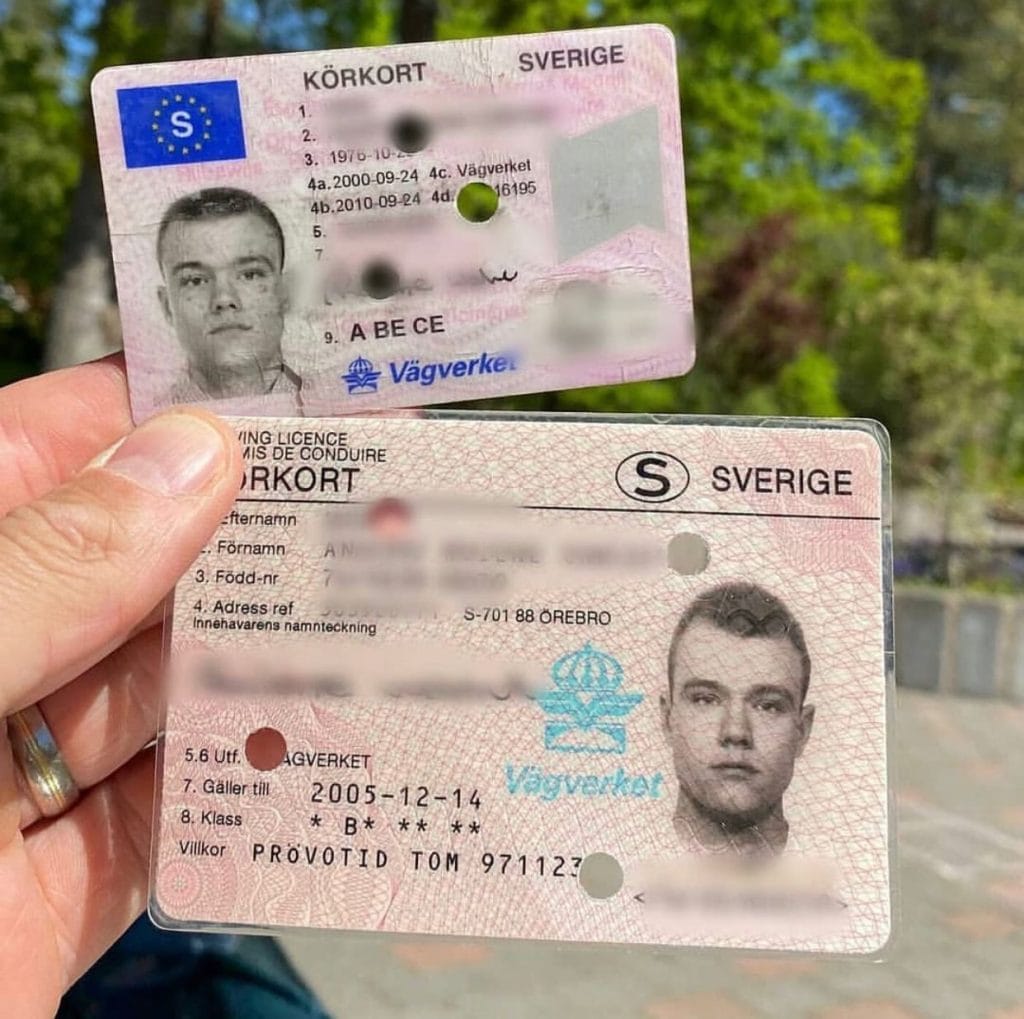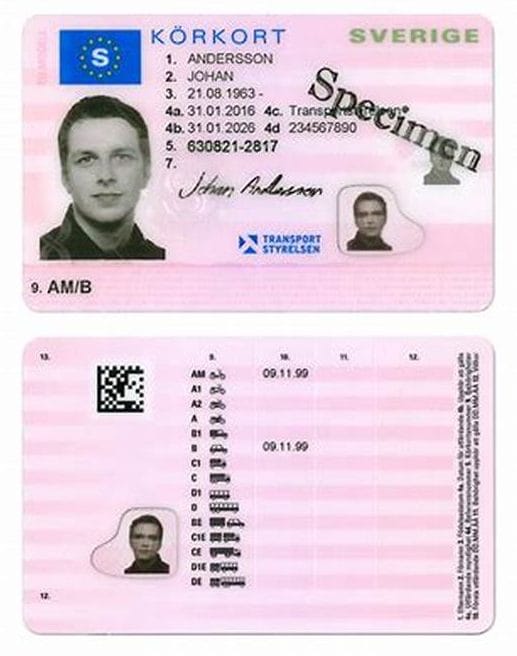Why Buy Driving License Is Much More Hazardous Than You Think
페이지 정보
작성자 Anke Sleigh 댓글 0건 조회 13회 작성일 25-03-05 11:45본문
The Comprehensive Guide to Legally Obtaining a Driving License
Driving is a fundamental ability for many, using the flexibility to take a trip where and when you desire, typically making life more practical and satisfying. Nevertheless, acquiring a driving license is a process that needs understanding, köp körkort utan test patience, and adherence to legal treatments. This guide intends to provide a comprehensive summary of the actions one should follow to legally acquire a driving license, highlighting crucial considerations and often asked questions to ensure a smooth and problem-free experience.
Understanding the Basics
Before diving into the application process, it's important to comprehend the basic requirements and kinds of driving licenses readily available. Driving laws differ significantly from country to country, and even within different states or provinces within the exact same nation. Typically, there are several kinds of driving licenses, consisting of:
- Learner's Permit: This is frequently the initial step in the process, enabling new motorists to get experience under supervision.
- Provisionary License: Issued after passing a basic driving test, this license generally features restrictions and is a stepping stone to a full license.
- Full Driver's License: köp Sverige Körkort Once all the needed requirements are satisfied, chauffeurs can get a complete license, which uses total driving privileges.
- Industrial Driver's License (CDL): Required for those who wish to operate commercial automobiles, such as trucks or buses.
Actions to Obtain a Driving License
1. Research Local Driving Laws
The very first step in acquiring a driving license is to research the particular requirements in your location. Go to the main website of your regional Department of Motor Vehicles (DMV) or KöPa A1 KöRkort comparable company to discover detailed info about the licensing procedure, including age restrictions, required files, and charges.
2. Prepare Required Documentation
Each jurisdiction has its own set of files that must be sent to request a driving license. Commonly required documents include:
- Proof of Identity: A passport, birth certificate, or state-issued ID.
- Proof of Residency: Utility bills, lease contracts, or other official documents that confirm your address.
- Social Security Number (if suitable): In some nations, a social security number or equivalent is needed for recognition.
- Vision Test Results: Some places require a vision test before providing a learner's authorization or license.
3. Take a Driver's Education Course
Lots of states and nations need new motorists to finish a driver's education course. These courses are developed to teach the rules of the roadway, traffic laws, and safe driving practices. They can be completed Köpa C Körkort Online or in a classroom setting and often consist of both theoretical and practical parts.
4. Apply for a Learner's Permit
Once the required paperwork is prepared and the driver's education course is finished, the next action is to look for a learner's license. This normally includes checking out the DMV or submitting an application Köpa C Körkort Online. You will likewise need to pass a written test that covers traffic laws and driving knowledge.

5. Practice Driving
With a learner's license, you can start practicing driving under the supervision of a certified adult. This is an essential action in building your self-confidence and abilities behind the wheel. It's also essential to gain experience in various driving conditions, such as night driving, highway driving, and Köpa A1 Körkort driving in inclement weather condition.
6. Set up and Pass the Driving Test
After gaining sufficient driving experience, you can schedule a driving test with the DMV. The test will assess your ability to securely run a lorry and follow traffic laws. You will need to bring an appropriately registered and insured vehicle to the test, and the examiner will evaluate your driving abilities on a predetermined path.
7. Apply for a Provisional License
If you pass the driving test, you will normally receive a provisional license. This license may come with limitations, such as a curfew or a limit on the number of travelers you can have in the car. These limitations are created to lower the danger of accidents and assist new chauffeurs acclimate to the roadway.
8. Update to a Full License
As soon as you have actually held a provisionary license for the necessary duration and fulfilled any extra requirements, you can update to a full driver's license. This process typically involves an easy application and might need a retest or extra documents.
Tips for a Successful Application
- Start Early: Begin the procedure as quickly as you meet the age requirement to give yourself sufficient time to prepare.
- Stay Informed: Keep updated with any changes in driving laws or DMV procedures.
- Practice Regularly: Consistent practice is crucial to developing self-confidence and improving your driving abilities.
- Stay Calm During the Test: Anxiety can impact your performance, so take deep breaths and stay focused.
- Follow DMV Instructions: Pay close attention to the guidelines offered by the DMV and the examiner throughout your test.
Often Asked Questions (FAQs)
Q: What is the minimum age to look for a learner's authorization?
A: The minimum age differs by jurisdiction. In the United States, it typically ranges from 15 to 16 years old. In the UK, the minimum age is 17. Check your regional DMV site for specific details.
Q: Can I get a driver's license online?
A: Some jurisdictions permit you to complete parts of the application procedure online, such as completing types and scheduling tests. Nevertheless, you will normally require to go to a DMV office personally to submit needed files and take the driving test.
Q: What takes place if I stop working the driving test?
A: If you stop working the driving test, you can normally retake it after a particular period. This period differs by place, however it is often a couple of weeks. It's a great concept to practice more before retaking the test to improve your chances of success.
Q: Can I drive alone with a learner's authorization?
A: No, a student's authorization usually requires you to be accompanied by a certified adult, generally over 21 years old, who is seated in the front guest seat.
Q: Is a vision test needed to get a driving license?
A: Yes, most jurisdictions require a vision test to guarantee that you can safely run a vehicle. You can typically take this test at the DMV or with an approved optometrist.
Q: How long does it require to get a full driver's license?
A: The time required to acquire a full driver's license differs depending on your jurisdiction and the specific steps involved. Typically, it can take numerous months, consisting of the time required to complete a driver's education course, hold a student's license, and pass the driving test.
Q: Can I use a provisional license to drive for work?
A: It depends on the constraints put on your provisional license. Some provisionary licenses allow you to drive for work, while others may have particular constraints. Inspect your license for information or get in touch with the DMV for explanation.

Q: What is the distinction between a learner's permit and a provisional license?
A: A student's license is the first phase of the licensing procedure and allows you to drive just under guidance. A provisionary license, on the other hand, grants you more driving opportunities however may still have some constraints, such as a curfew or passenger limits.
Q: Can I request a commercial driver's license (CDL) without a full driver's license?
A: No, you usually require a full driver's license before looking for a CDL. A CDL is a customized license that needs additional training and testing, and it is just released to those who have demonstrated the ability to securely run a basic car.
Q: What should I do if I lose my driving license?
A: If you lose your driving license, you ought to report it to the DMV and request a replacement. You might need to provide evidence of identity and pay a charge. It's also a great concept to inform your insurance provider and any other relevant celebrations.
Acquiring a driving license is a substantial turning point that opens new chances and increases independence. By following the steps outlined in this guide and staying notified about regional laws and requirements, you can ensure a smoother and more successful licensing procedure. Keep in mind that driving is a serious responsibility, and taking the time to learn and practice is essential for your safety and the safety of others on the road.
댓글목록
등록된 댓글이 없습니다.

